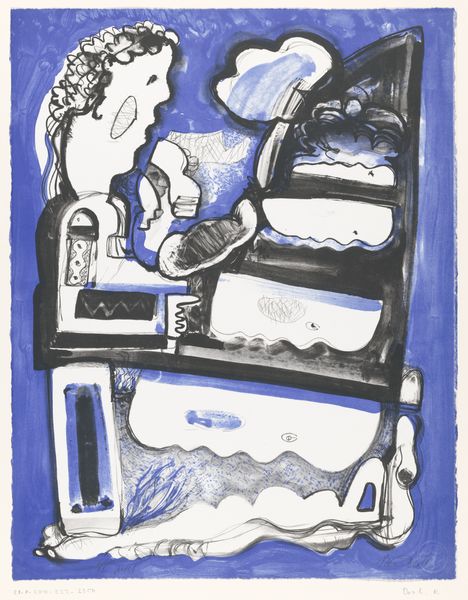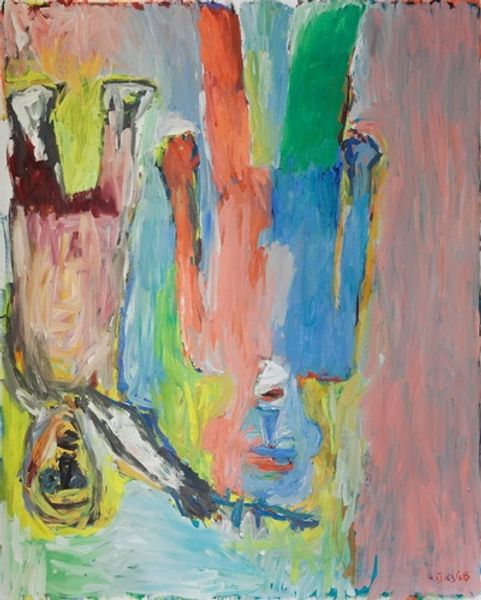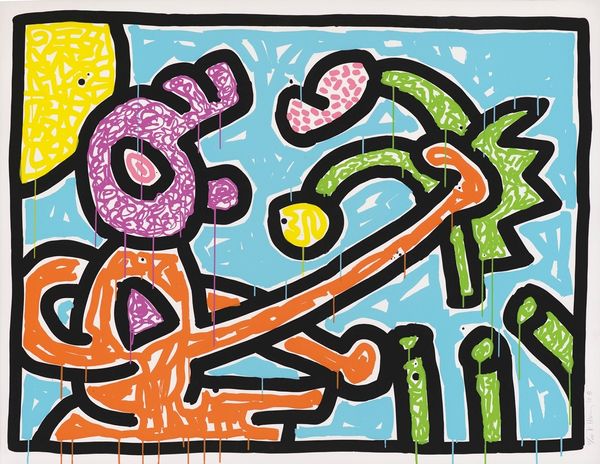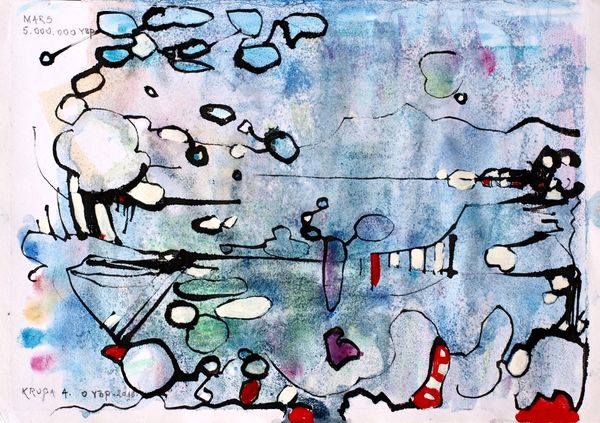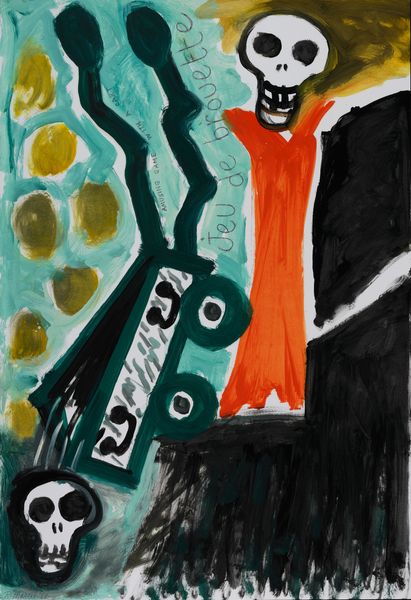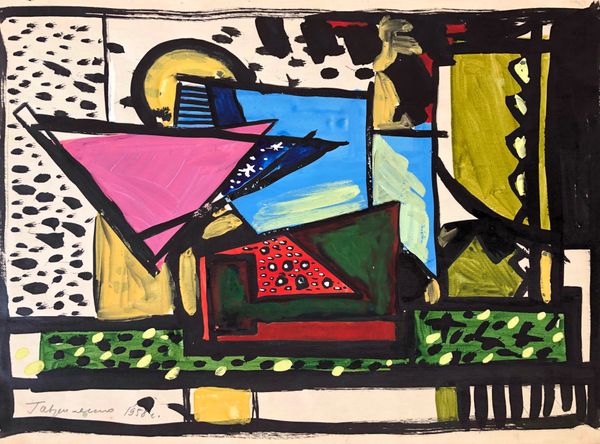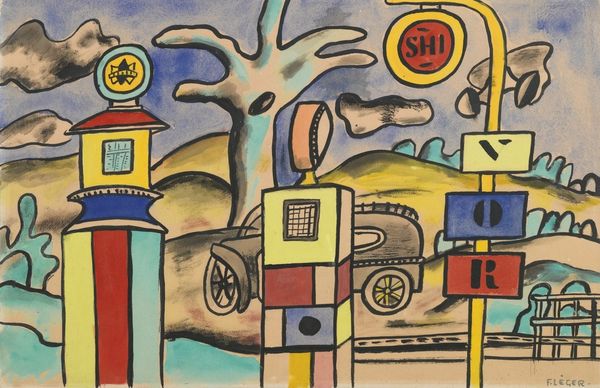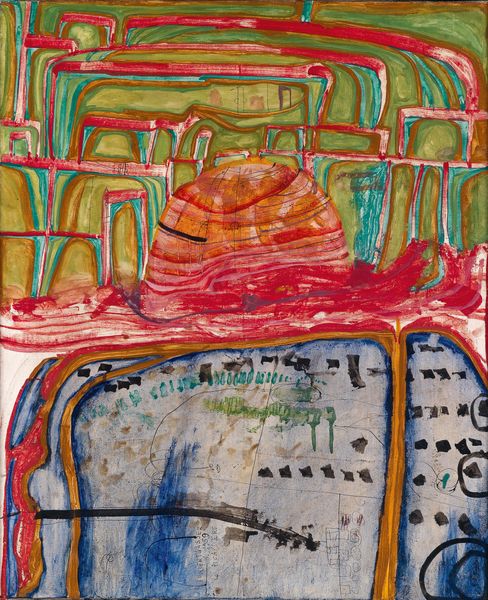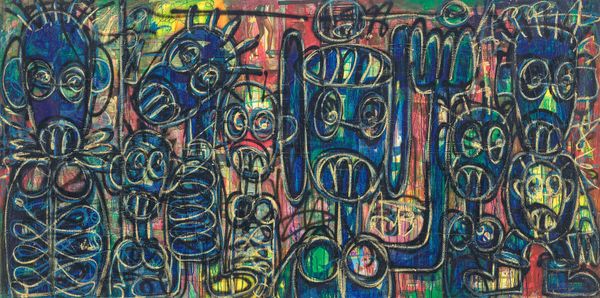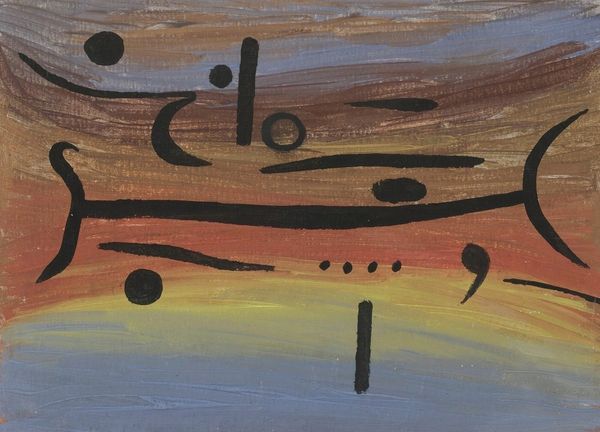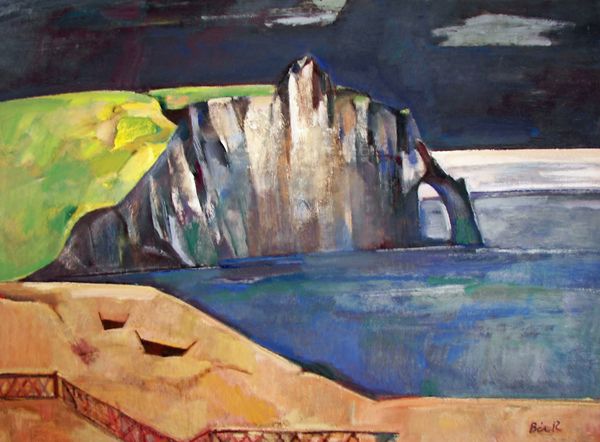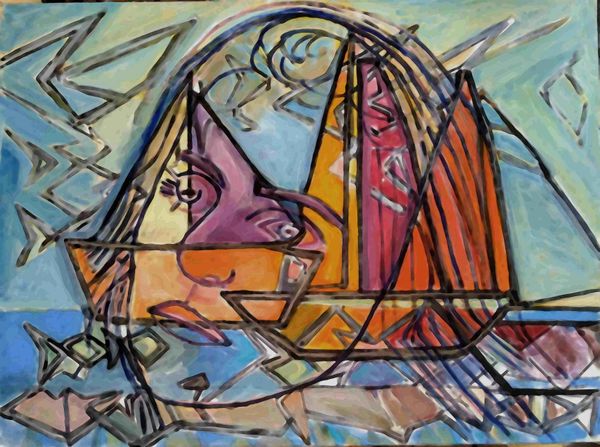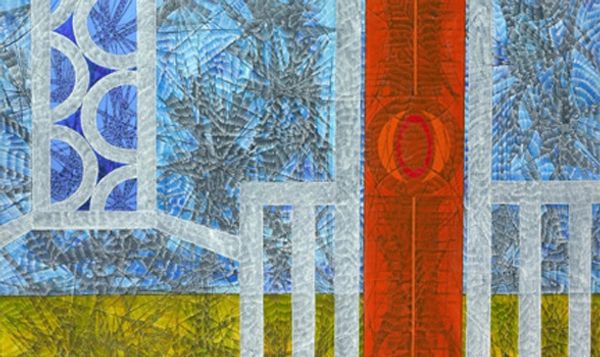
Dimensions: overall: 177.8 x 274.3 cm (70 x 108 in.)
Copyright: National Gallery of Art: CC0 1.0
Editor: We're looking at Philip Guston's "The Ladder," created in 1978. It's acrylic on canvas, and something about the bluntness of the shapes, the red and blue and grey… it feels strangely unsettling. What strikes you when you look at this piece? Curator: What captures my attention is the sheer materiality of the paint application, and its subsequent effect on the forms depicted. Note the bold outlines, a kind of brutal distillation into shape, that recalls early Synthetic Cubism in its attempt to flatten pictorial space and emphasize the canvas as a two-dimensional surface. Do you observe the rough, almost crude handling of the acrylic itself? Editor: I do, especially the layering of blues in the background. It feels less like careful blending and more like… deliberate strokes left visible. Is that significant? Curator: Precisely. This visible texture thwarts any illusion of depth. Instead, we're confronted with the 'objecthood' of the painting itself. Further, consider the rudimentary rendering of the ladder. Guston seems to reject traditional artistic skill, choosing instead a simplified, almost childlike, visual language. It disrupts established notions of artistic finesse, challenging our preconceived expectations. Editor: So it's not about *what* is depicted—a ladder, a sun—but *how* it's depicted. The structure of the piece, the relationships between color and form, all point to something beyond the surface image. Curator: In effect, the structural elements reveal a deeper commentary through their interplay. Guston demands we look past superficial representation to recognize a visual vocabulary questioning artistic norms. Editor: That's fascinating. I'd always thought of content as primary, but seeing how Guston uses form to convey meaning really shifts my perspective. Curator: Indeed, it’s in this defiance of facile representation that "The Ladder" compels reevaluation of inherent artistic value.
Comments
No comments
Be the first to comment and join the conversation on the ultimate creative platform.
